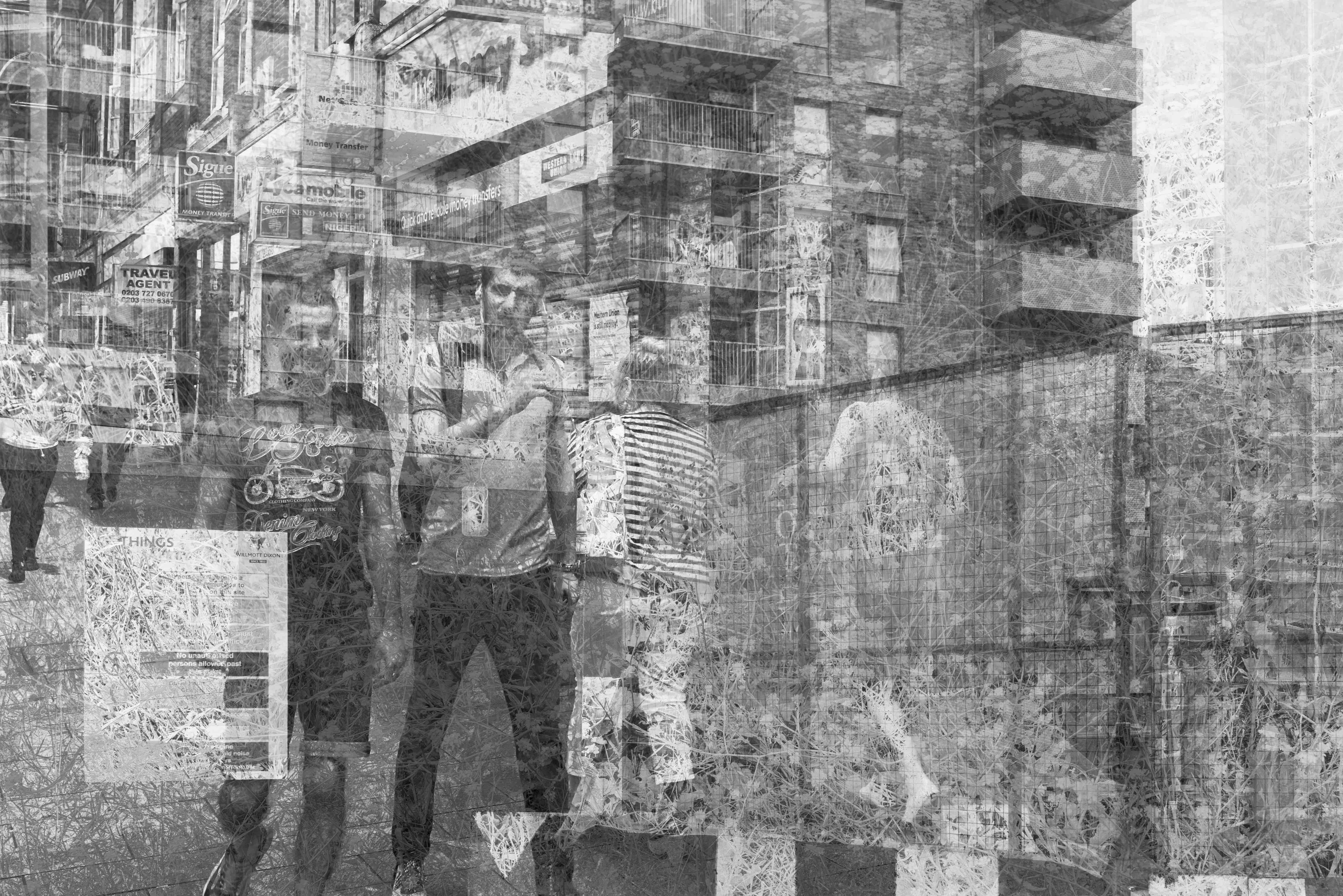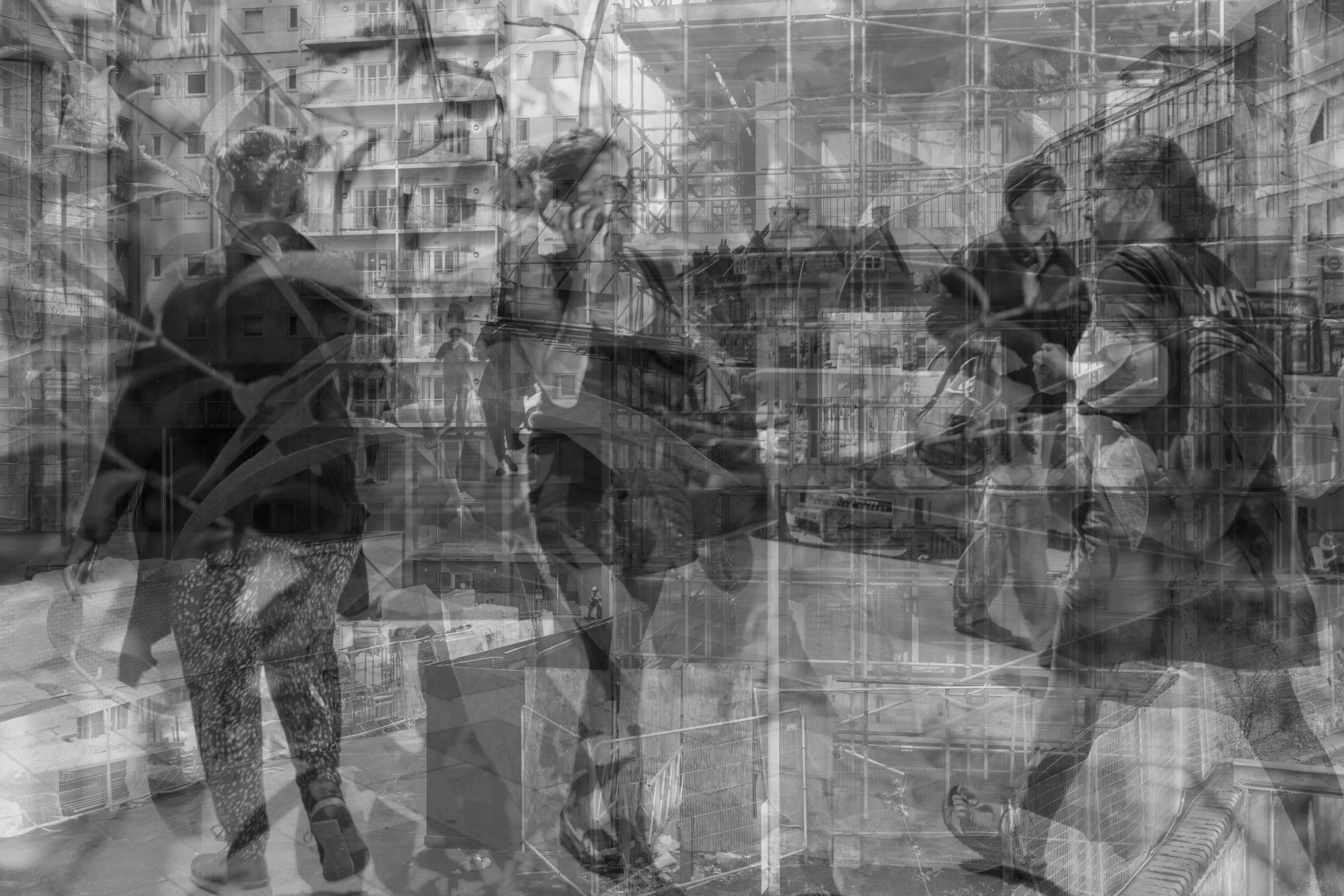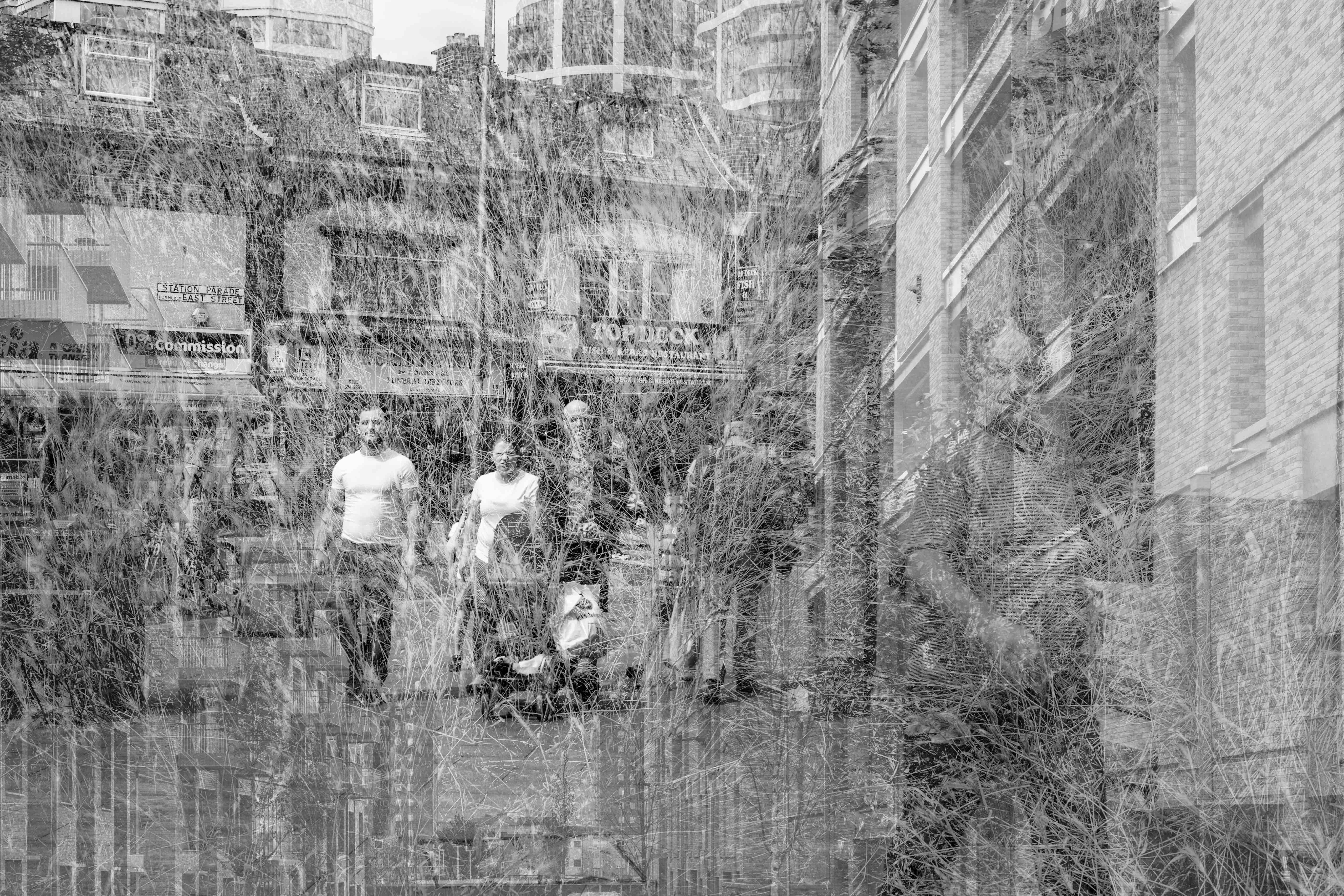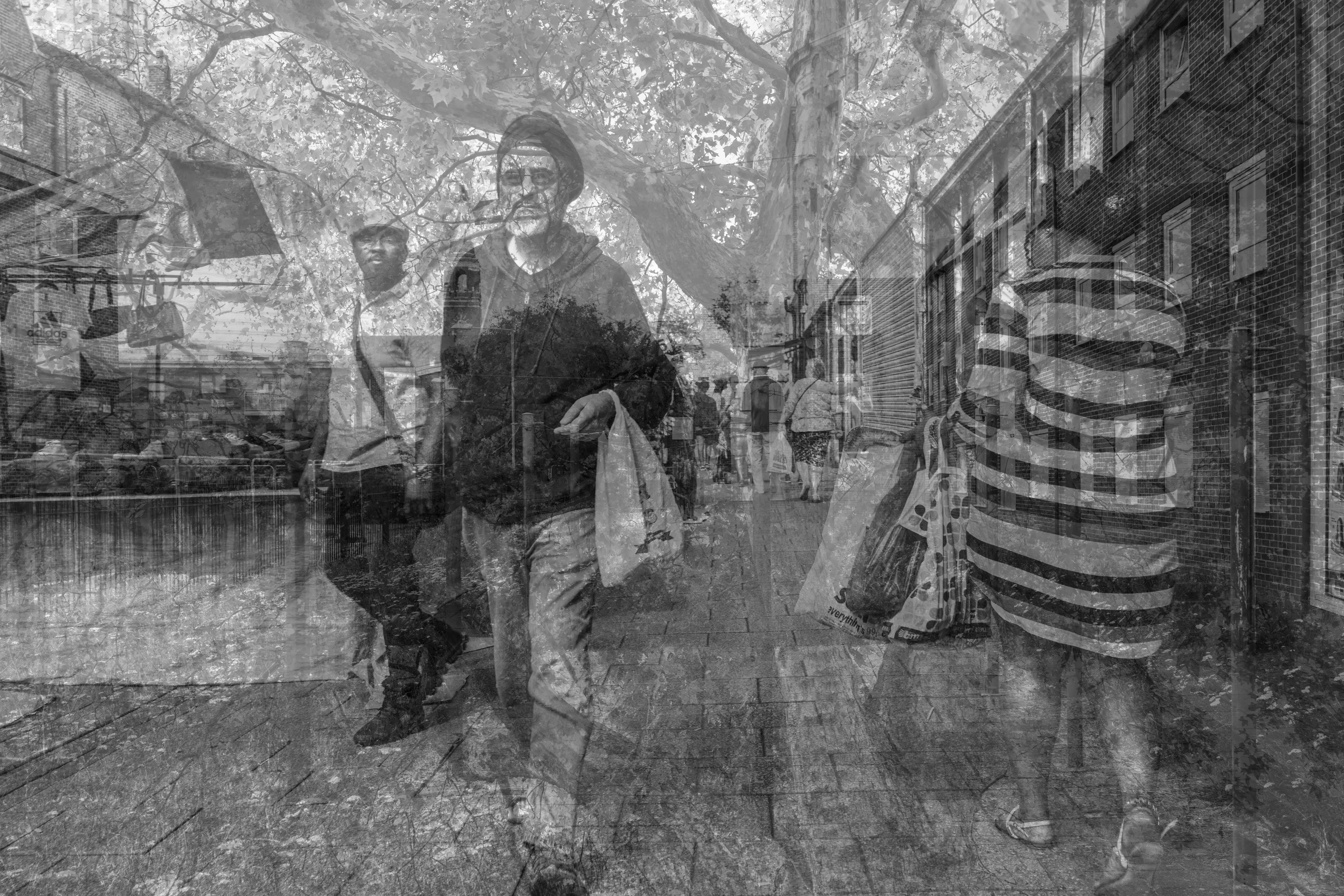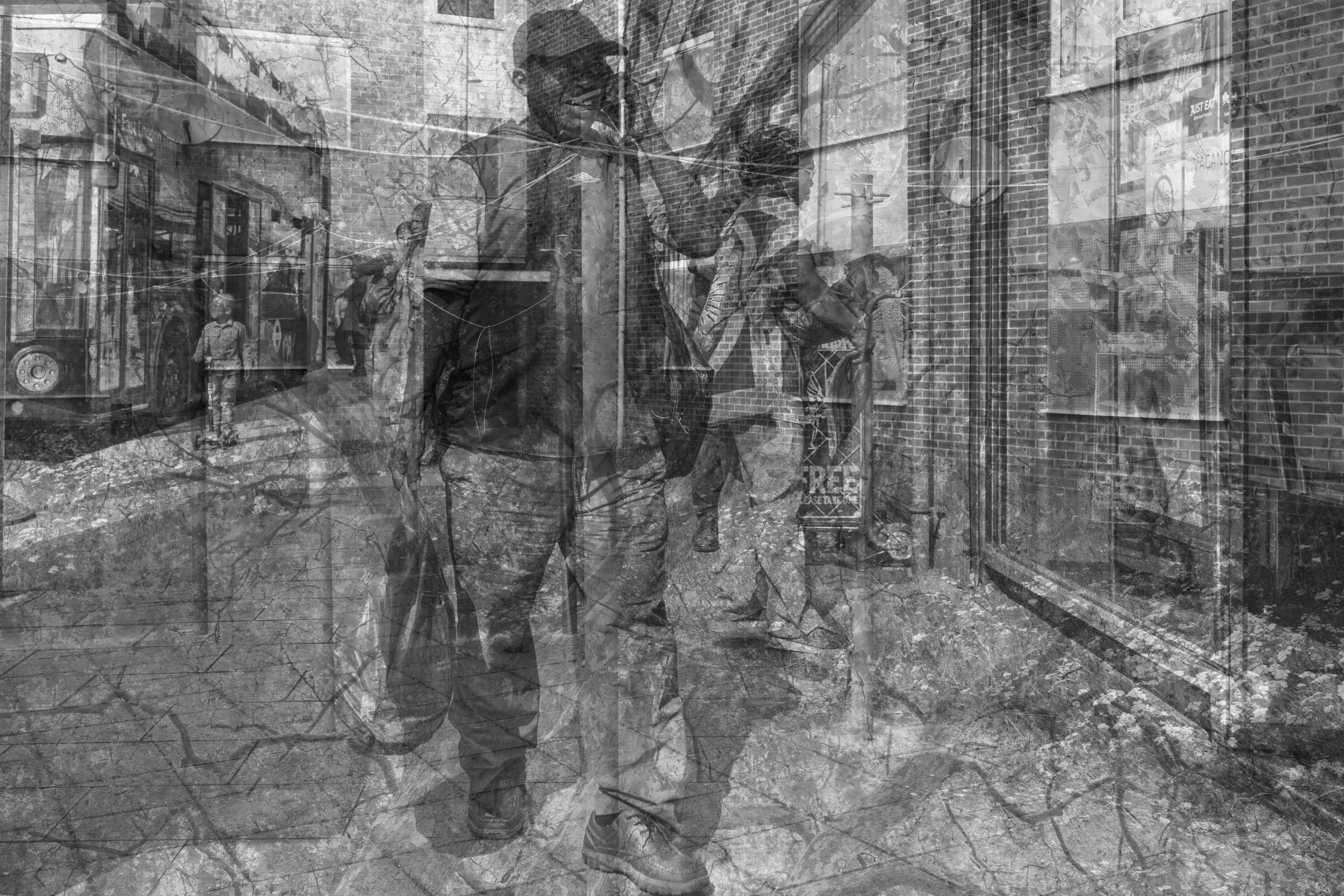Gallery of images included in my Surfaces and Strategies Work in Progress portfolio, some of which were presented and discussed in the October FMP Module Leader Group Critique.
Reflection on FMP Proposal Feedback
Heartening to get positive feedback and pointers for development from Wendy and Jessie. The main issues to think about were:
- getting the scale of the project right, and making sure it is achievable in the time available. For me, that means that I might not include the work done in all the micro-projects. Whilst they will all contribute to the development of the process, the images produced may not feature in the final edit.

- thinking carefully about the audiences for the final images and how best to disseminate and present the work. We discussed Wendy Ewald’s use of posters and billboards in the ‘Towards the Promised Land’ project, and similar forms of public engagement. One example of this form of presentation are the images that have been displayed on the hoardings around the Ford plant in Dagenham while it is being demolished. These prints of the car plant interior are printed on plastic and screwed to the hoarding inside a frame. A similar form of display could be used for the Shed Life work.
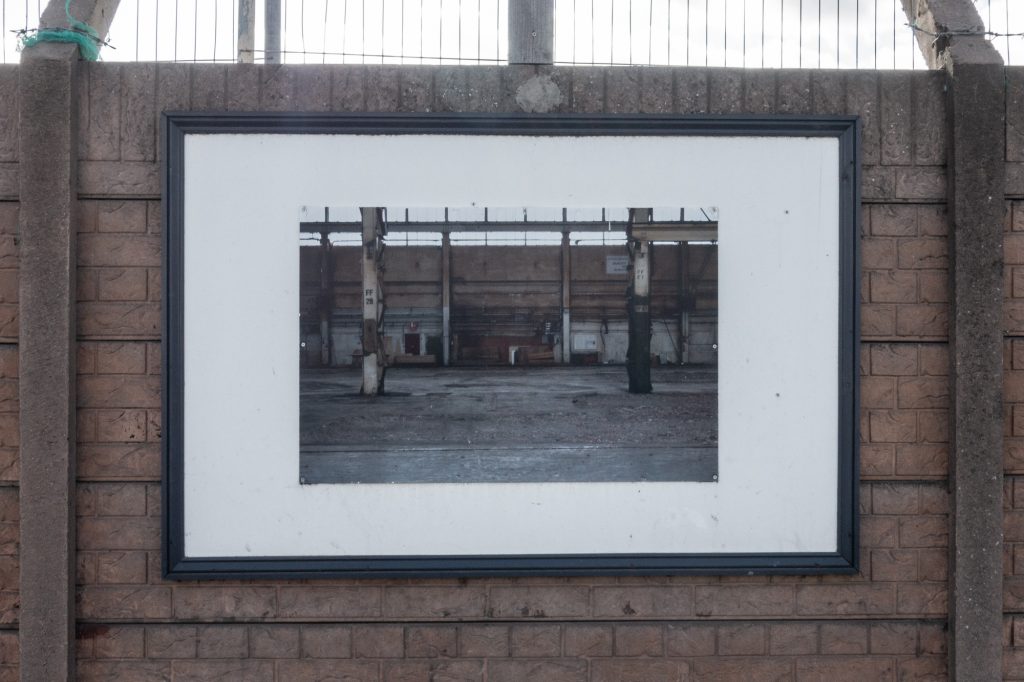


- making sure that full consent has been obtained, and that participants are fully aware of their part in the project and what will happen to the outcomes. This requires me to produce a clear description of the project and to obtain signed permission to use the images. This has to make clear that the work will not be used for commercial purposes, but can otherwise be quite open in use of the images. It should be made clear that the images may be manipulated in some way, and links be given to some indicative work.

- the output could be a ‘fiction’ of some sort, like Grayson Perry’s Ballad of Julie Cope, and the accompanying tapestries (which bear resemblance to montage).
- making connections for future practice and engaging with organisations that produce and commission similar types of work (for instance, Grain).
References
Grain https://grainphotographyhub.co.uk/
Grayson Perry, Julie Cope’s Grand Tour https://www.craftscouncil.org.uk/what-we-do/julie-copes-grand-tour/
Wendy Ewald, Towards a Promised Land http://wendyewald.com/portfolio/margate-towards-a-promised-land/
Moving between digital and analog
I’ve written earlier about post-digital practice, in which analog and digital forms of production and presentation are combined.
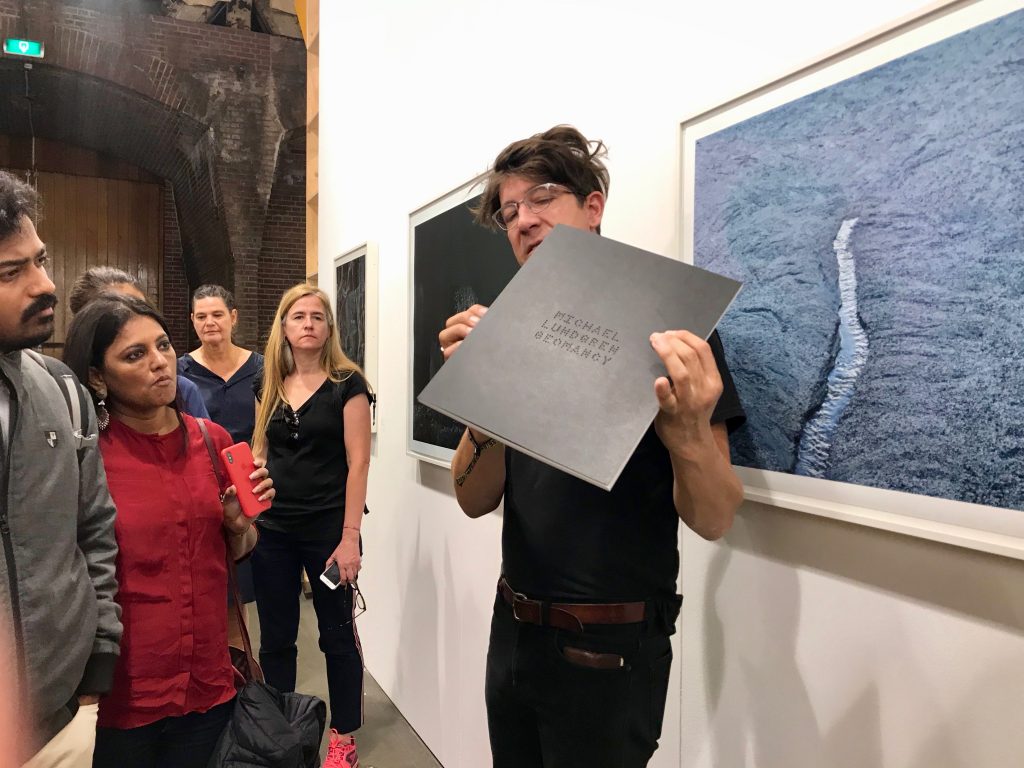
I was fortunate to hear Michael Lundgren present his current work at Unseen, and to talk to him afterwards about his practice. Lundgren studied under Mark Klett, and worked as a printer with Klett for a number of years. Whilst his early work included rephotography in Phoenix and San Francisco (with Klett), his more recent work is ‘concerned with making images that make you feel something you can’t quite understand’. These are in the form of large gelatin silver prints (24 by 30 inches, in editions of seven with one artist’s print) and books based on series of images (the latest being Geomancy, a large format book of 80 photographs taken in the desert, produced as a special edition of 30 and a trade edition of 800 by publisher Stanley/Barker).
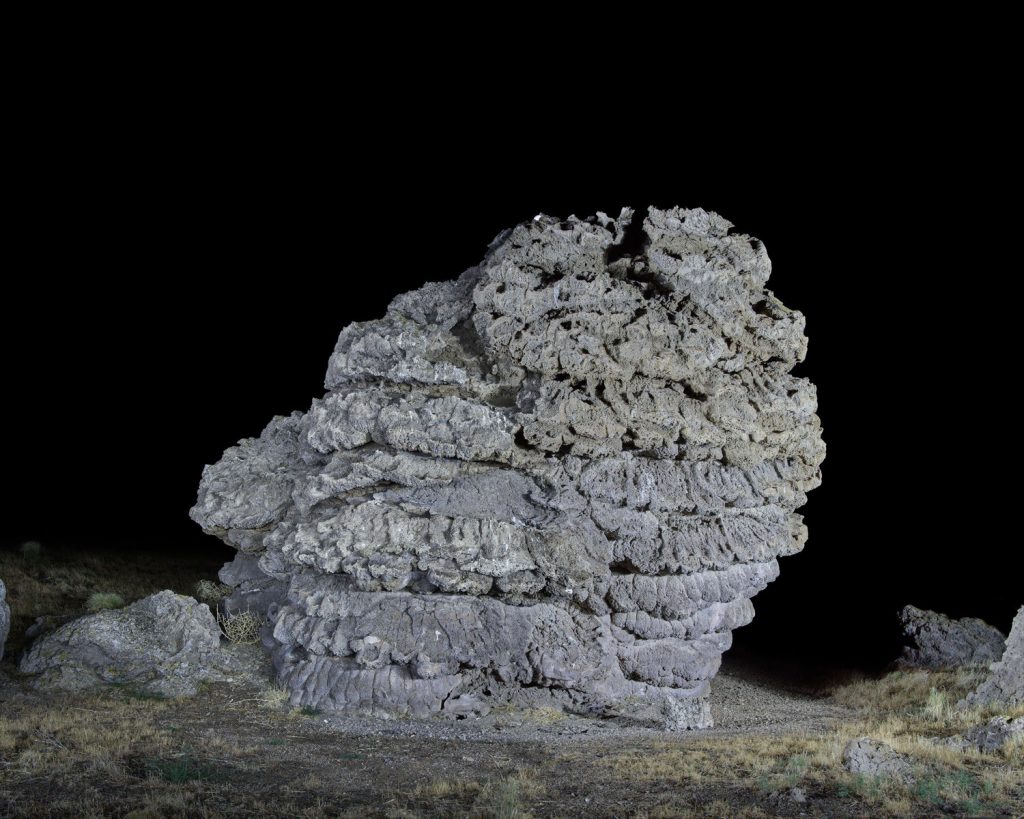
In his talk, Michael stated that the books were the primary outcome of his practice. He produces just small editions of the prints so that he does not have to hold high levels of stock. It also has the advantage of enabling him to move quickly on from one series to the next, without having to go back to printing earlier work. In terms of process, he now makes the initial image with a Sony full-frame digital camera, and sends the file to Chicago Albumen Works to produce a large format silver halide negative using the LVT (Light Valve Technology) process. He then produces a gelatin silver print from the negative (this is the process that Salgado now uses, with negatives produced on Ilford FP4 using the LVT process). Analogue Arts in London offers this service (producing 4×5 or 8×10 negatives from digital files).
The passage of time and becoming
Kim Boske

At Unseen, I was immediately drawn to Boske’s black and white ‘Snow’ (2015) for its similarity, in look, to my monochrome manipulation of channel mixing. This was exhibited as a 153×103 cm C-print in artist’s frame (in an edition of seven prints plus two artist’s prints).
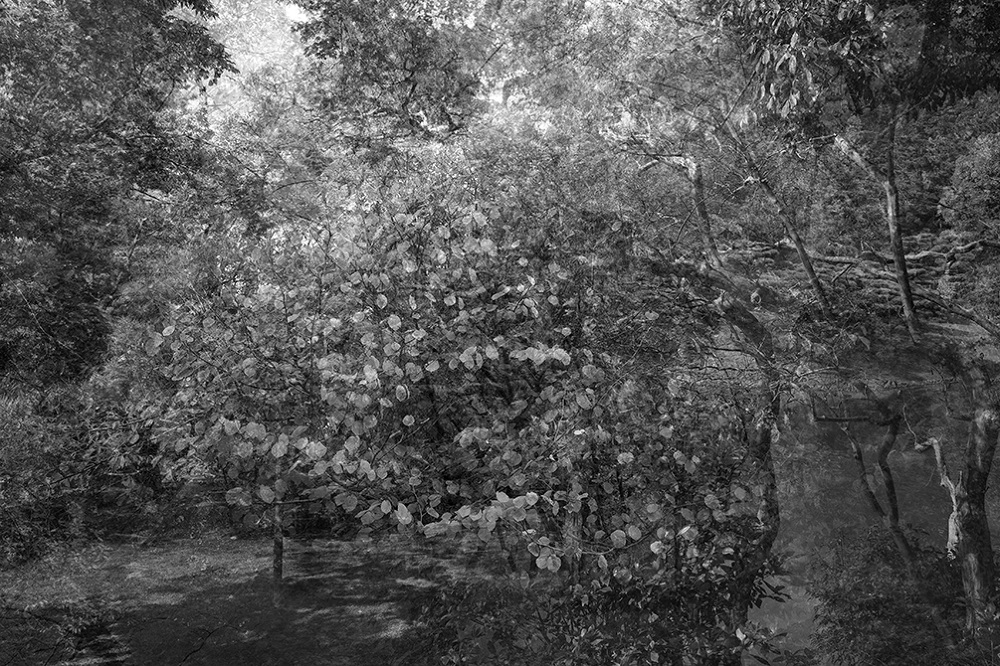
Whilst the form of layering suggests a similar process of production (and the more recent ‘untitled B/W’ series bears even closer similarity), looking at other colour work suggests that a different technique is used.


Boske states that she is ‘fascinated by how different moments in time and space determine our perspective and define reality’ and by ‘a way of thinking that presents itself more as “becoming” rather than “being”’ producing a ‘collection of afterimages taken from past and present, together constructing an image of ‘now’, revealing a phenomenon that is impossible to see or witness with the naked eye’. She sees art and nature as in dialogue and ‘entwined’ and states that her work is ‘basically an investigation of time and space’ informed by reading Deleuze and Bergson [artist’s website]. The human figure is absent from the images, only implied through the process of capture of the constituent moments that combine to make the final image. There is clearly resonance with my composites, but Boske focuses only on the ‘natural’ (not built environment, nor human activity). I’d like to explore this further, particularly the use of colour, and maybe experiment with the juxtaposition of natural/built/human images of this sort (rather than combining these within one image, though I think conceptually this works better).

It was also interesting to see the work she has done that is presented as large prints suspended on wires (not framed).
Whilst Boske explores the becoming of the natural (and implies some sense of continuity) my interest is in exploration of entwining as a core component of the process of change, and the instability and unpredictability of this process as a result of interaction between the natural, built and human (and the ultimate negation of those categories as distinct).

The work reinforces, for me, that the composites are tenable as a visual form, but that I need to explore further ways of presenting the work. Interestingly, Boske also produces animations, displayed on LCD panels, as well as large prints.
Surface modified images
Many people commented on the widespread interest in alternative processes at Unseen this year – lots of cyanotypes. There was also a substantial amount of work in which different surfaces had been used to modify images. Sasan Abri removes the gelatine layer of prints and places these on watercolour paper, which gives the prints a lo-fi, hand-drawn look which forces the viewer to work to make sense of the image.
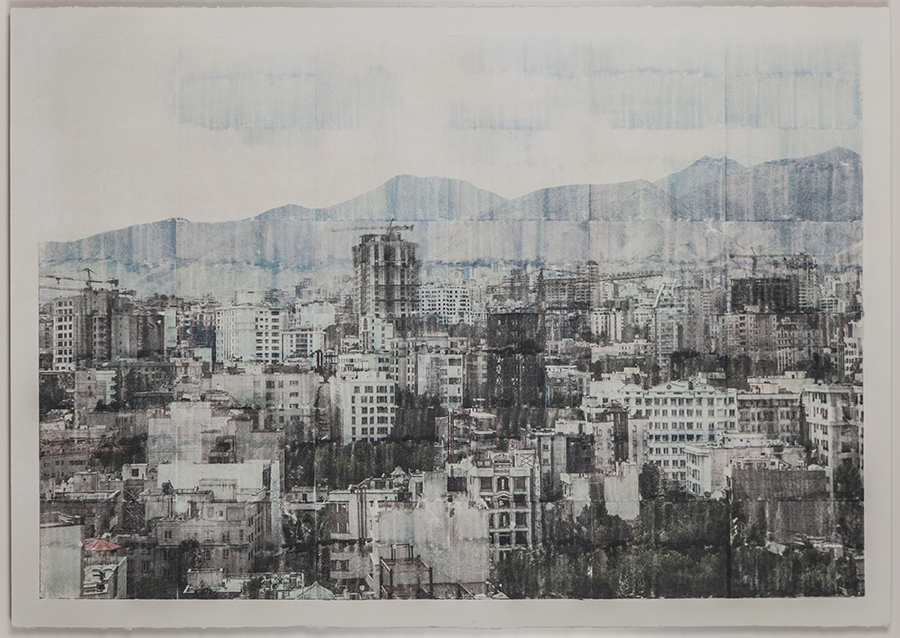
Parisa Aminolahi uses paint to modify her photographs of her mother, creating a highly textured three-dimensional surface. In both these cases each work is unique.
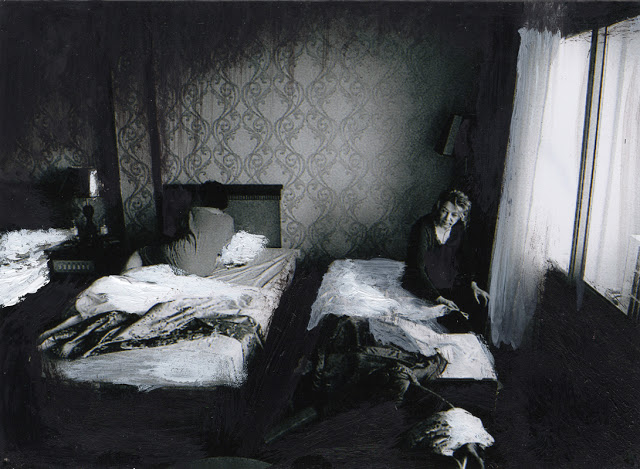
The most extreme form is Sylvie Bonnot’s transfer of the print layer to three dimensional objects, blurring the boundary between photography and sculpture.
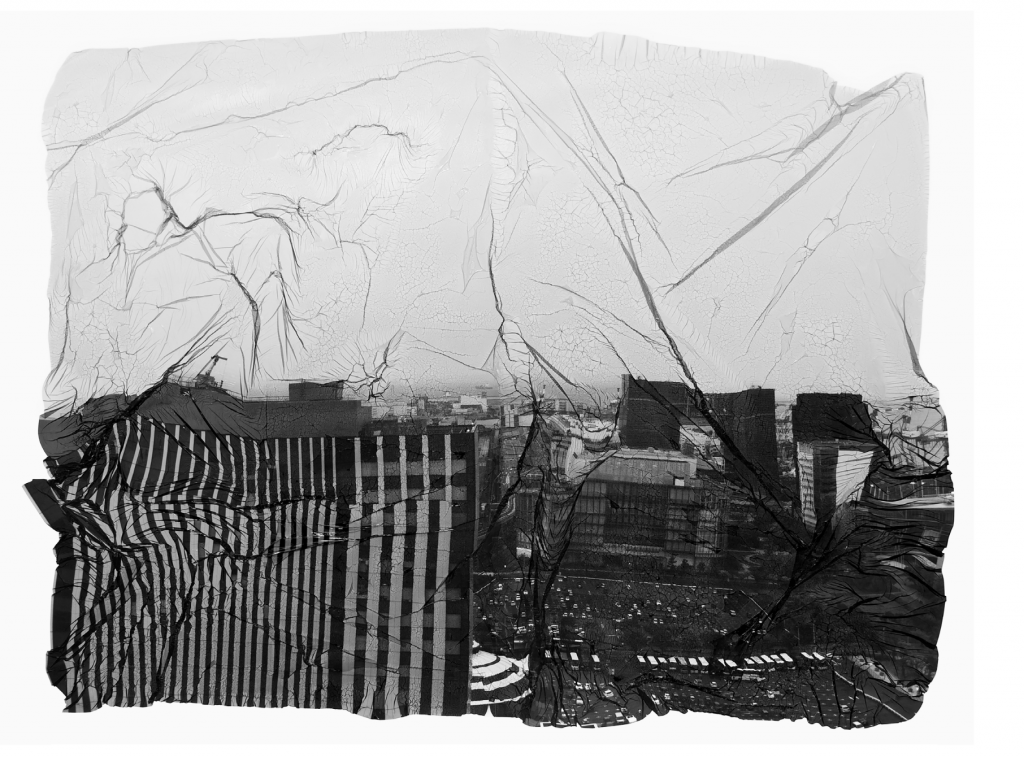
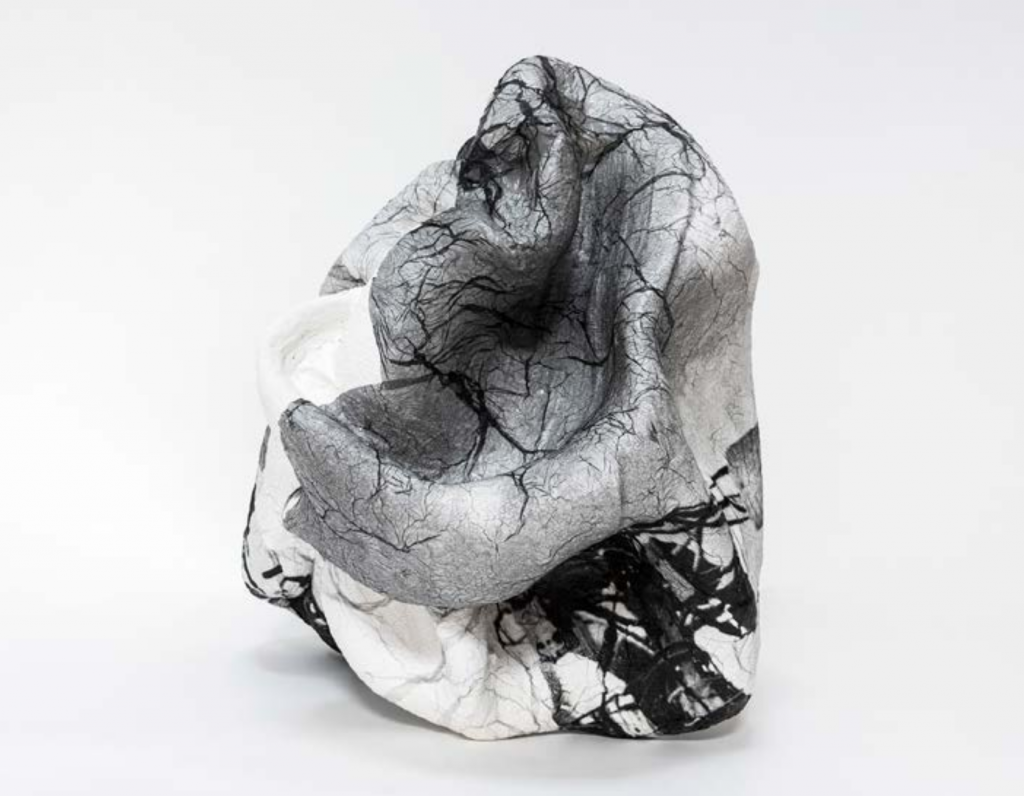
This is taken a stage further by Adam Jeppesen, who has moved from conventional cyanotypes to three dimensional work with dyed cloth.


I have thought about the use of objects and artefacts alongside photographic work, but these artists have prompted me to think about the possibility of some form of three-dimensional photographic work. In one of my principal areas of interest (urban development), Felicity Hammond has produced more sculptural work, and at her Unseen exhibition, printed modified developer CGIs on plastic sheeting and attached these to scaffolding structures.

The challenge for me is to combine this three-dimensional photographic work with portability. Projection on to a surface is also a possibility.
Resources
Sasan Abri
http://www.sasanabri.com/
Parisa Aminolahi
http://parisaaminolahi.blogspot.com/p/cv.html
Sylvie Bonnot
http://www.sylviebonnot.com/default.asp?lg=gb
Felicity Hammond
http://www.felicityhammond.com
Adam Jeppesen
http://www.adamjeppesen.com
The book as object/archive
I was fortunate to be able to talk to Lukas Birk at Unseen. A number of his projects have given rise to ‘archive’ style publications, where a range of different kinds of images are brought together into a single place around a central common theme. For my project, his ‘FERNWEH – a man’s journey‘ is particularly interesting. This brings together a number small A5 handmade books, some of which are altered texts, and others of which are collections of found or family photographs. Individually each has its own theme and identity, and collectively (presented together in a box), according to Birk, they constitute ‘a riveting travelogue memoir that unwraps the lifetime of three generations of men who shared a passion for traveling, photography and the mountains’.

Apart from a pamphlet with a short essay and list of plates, there is no text and all images are full bleed. The reader can clearly look at the constituent booklets in whatever order they wish. The essay (by Natasha Christia) reinforces this, stating that ‘the five booklets … are fragments of an incomplete photographic memory, misconstrued by nature. They also operate as interconnected vessels of a shared universal experience, inviting us to step back and forth in time and engage with content according to our own personal visual and emotional resonances’. In thinking about the relationship between this kind of portable print output and exhibitions, it is interesting to note that Birk states that FERNWEH ‘was originally conceived as a mutating touring exhibition’ This invokes the kind of adaptable exhibition resource produced by Dayanita Singh, and the notion of ‘locatedness’ explored by composer Georgia Roberts. In producing site specific compositions, Roberts explores the sonic characteristics of the place, seeking resonances and frequencies that ‘belong’ or are optimal in the place. This can also be seen as a process of ‘extraction’ of music from a place, and then a placement of the listener in this sonically animated space. There is more to explore here, particularly in drawing comparisons with between contemporary composition and the visual arts. For my FMP project, however, the key outcome is to think about the way in which I can produce a collection of images and other material which could constitute a resource for the production of exhibitions or installations that adapt to the spaces in which they are presented, and the basis for other outputs (such as an artist book). ‘Locatedness’ is a central theme both in the production and presentation of the work.
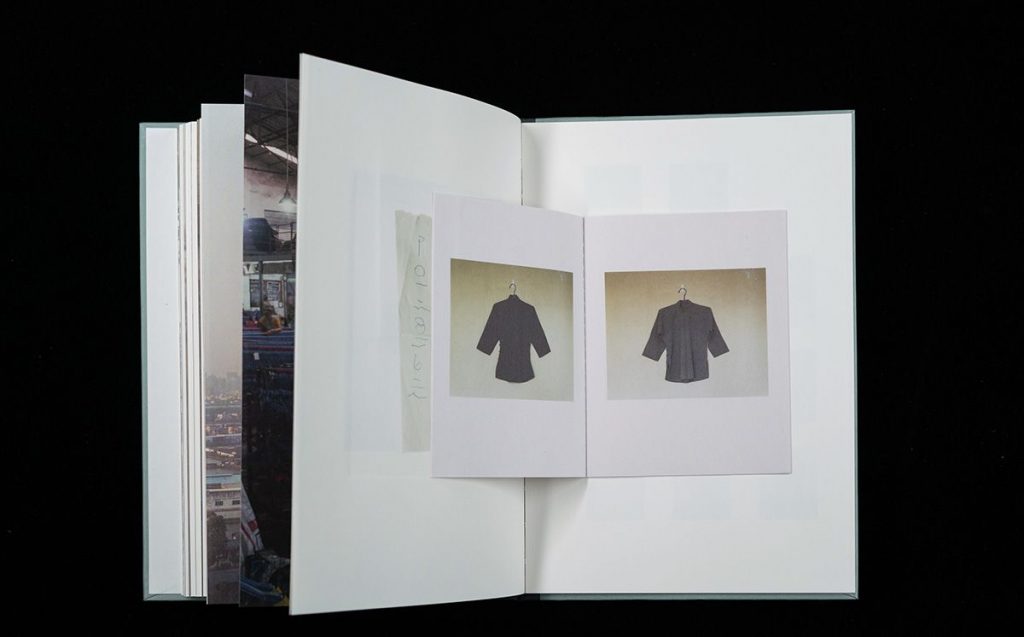
Kurt Tong’s ‘Combing for Ice and Jade‘ was also available at the book exhibition. The book draws of a range of types of image and text to present an account of the life of his amah. This includes family photographs, still life photos, period publications, texts and more. Coming initially from a design created at the ‘Photobook as Object’ workshop, it has the structure and content of a handmade artist book, but being produced by a commercial publisher, has a very different feel. The commercial production also limits the range of different kinds of papers and printing used, a key characteristic of the handmade artist book (it does, though, have cutouts, tipped in images and gatefolds, and other features typical of the handmade book).
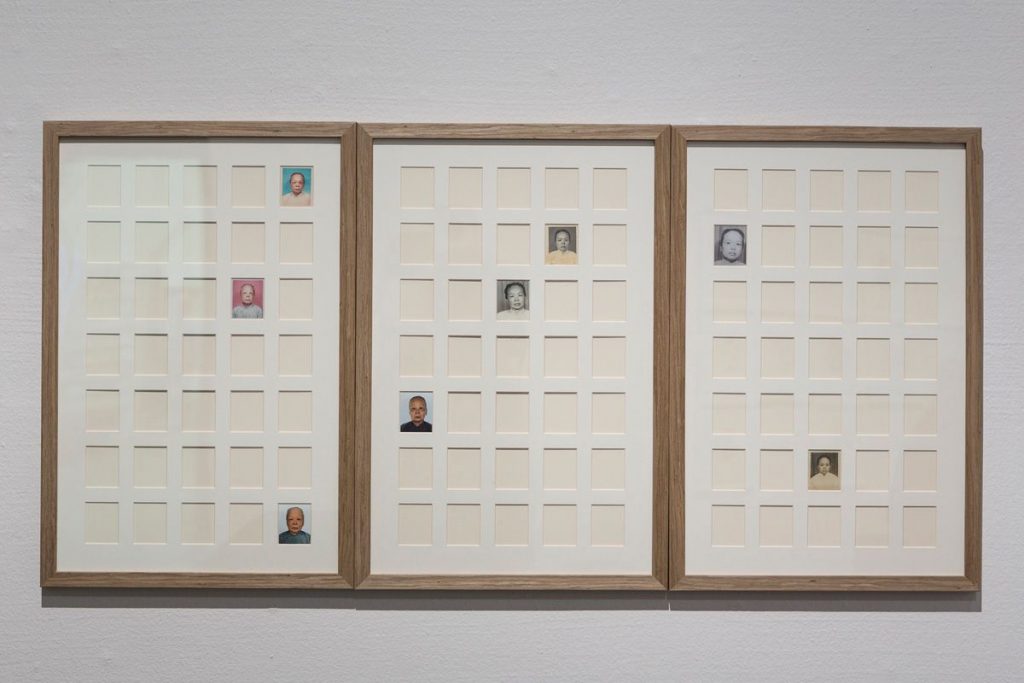
It was interesting to see the work as an exhibition at Arles. The book as a strong linear narrative structure, reinforced by text which maintains direction and pace. Though images are the principal focus of the book, the exhibition is a more visual experience. It allows the viewer to diverge from the linear narrative, and it is a more social experience (in that the viewing takes place with other people, which creates the possibility of interaction). A considerable amount of work needs to be done to turn an exhibition into a book and vice versa, and clearly one or the other may not be appropriate for a particular project.
References
Birk, L. 2019. FERNWEH – a man’s journey. Fraglich Publishing.
http://www.lukasbirk.com/portfolio/fernweh-a-mans-journey/
Huddersfield Contemporary Music Festival. 2019. Georgia Rodgers and ‘locatedness’. https://hcmf.co.uk/georgia-rodgers-and-locatedness/
Tong, K. 2019. Combing for Ice and Jade. Jiazazhi
https://jiazazhistore.com/products/kurt-tong-combing-for-ice-and-jade
Making a handmade artist book
It was great to receive my copy of Ryo Kusumoto’s artist book “連師子/Renjishi”.
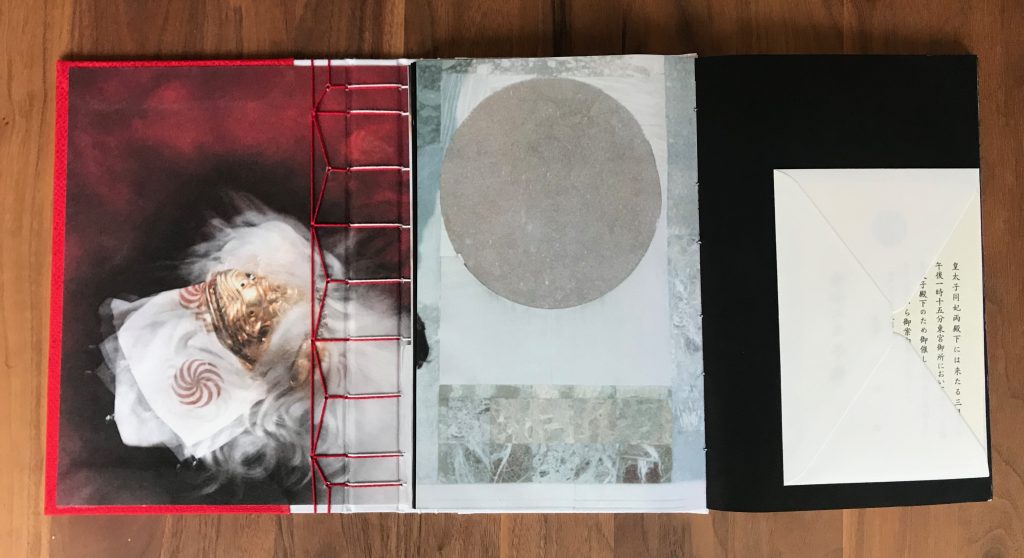
In many ways similar to Kurt Tong’s book (it comes from the same workshop), with a strong narrative thread (but focusing on a public figure, rather than being deeply personal). For insight into how these books are constructed, Kensaku Seki’s video is useful.
The process is similar to that used by Longly and Law. All the techniques were covered in the workshops I did at the London Centre for Book Arts, and I have all the equipment needed. For slightly bigger scale production, I’d like to explore risograph printing.
Resources
Making of ‘Of hope and fear‘ by Kensaku Seki.
Tammy Law’s artist photobook “Permission To Belong”
Katherine Longly’s artist book “To tell my real intentions, I want to eat only haze like a hermit ”
Ryo Kusumoto’s artist book “連師子/Renjishi”
Unseen Amsterdam Reflection
20th-22nd September 2019
https://amsterdam.unseenplatform.com/event
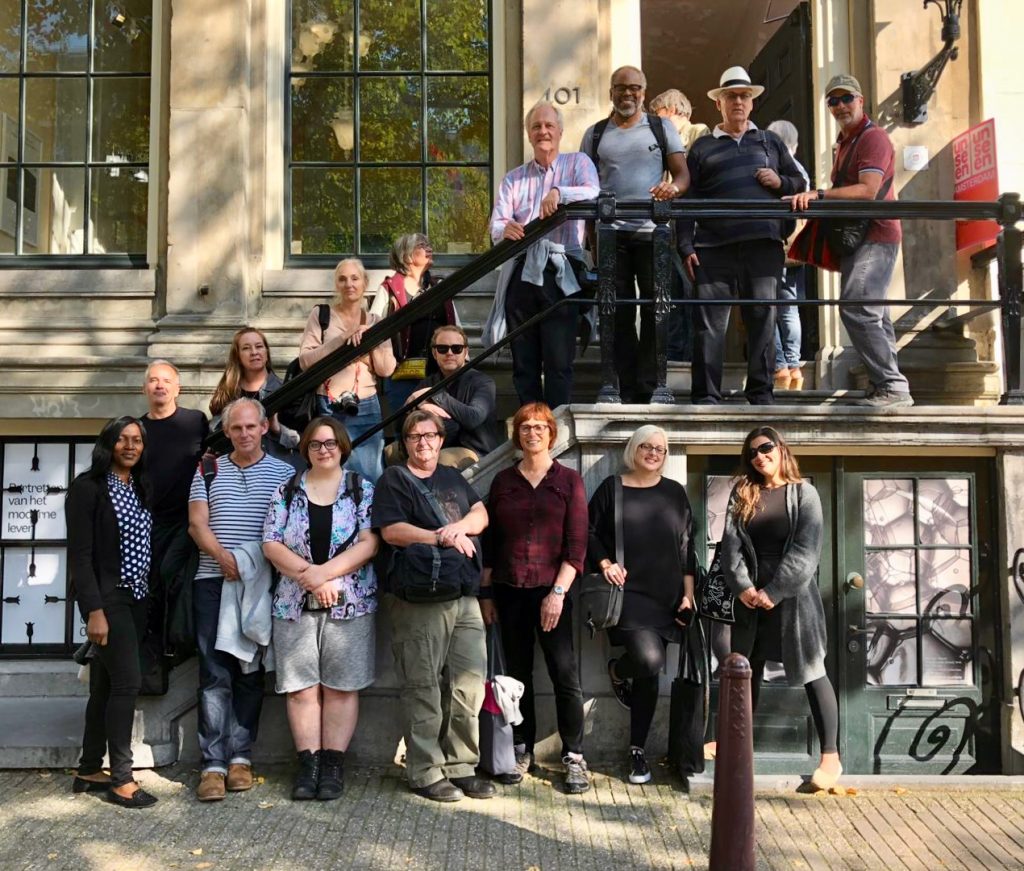
A somewhat belated reflection on Unseen Amsterdam 2019. This was the weekend before the beginning of the FMP module. Going back through my notes four weeks on, and with the development of my FMP at the forefront of my mind (the fieldwork phase starts tomorrow), I am going to focus on the work that has particular relevance for the development of my own practice, and specifically my final major project. Rather than one long post covering a lot of ground, I’m going to break up the reflection into five short, themed, posts: using corporate computer generated images (Felicity Hammond), past, present and becoming (Kim Boske), from digital image to chemical print (Michael Lundgren), surface modified images (Sylvie Bonnot, Sasan Abri, Parisa Aminolahi), the book as object/archive (Kurt Tong, Lukas Birk, the Photobook as Object workshop). The greatest benefit of the weekend was, as with Paris and Arles, being able to meet up with fellow MA students and tutors, and talk about our work. Wasn’t able to stay for the portfolio review, unfortunately, but only a few weeks since the last review in Bristol.
FMP Proposal and Schedule
The major benefit of putting the research proposal together for me has been drawing up a provisional timeline for the completion of the work. The nature of the project means that I have to leave the possible outputs fairly open, but the major milestones are clear. Here’s the full proposal. The timeline is below. Important to keep this under review (and assess the impact of any slippage).
Final-Project-Proposal-ABPlanning and set up
(23rd September 2019 to 20th October 2019)
Week 1 Unseen Amsterdam. Meetings with partners and participants, making images for the community, community day, demonstration.
Week 2 PK presentation and first tutorial. Planning session at school. Visit exhibition spaces.
Week 3 Meeting with Barking and Dagenham College. London Prosperity Board meeting. Initial briefing of community groups and schools.
Week 4 Submission of Final Project Proposal. Archive work at Valance House.
Collaborative image making and micro projects
(21st October to 15th December 2019)
Week 5 Workshops and fieldwork.
Week 6 Workshops and fieldwork. Feedback on Final Project Proposal.
Week 7 Workshops and fieldwork.
Week 8 Workshops and fieldwork. MPF/RPS group meeting (Bristol).
Week 9 Workshops and fieldwork. Magnum weekend workshop with Sim Chi Yin.
Week 10 Workshops and fieldwork.
Week 11 Workshops and fieldwork.
Week 12 Workshops and fieldwork.
Series of workshops and photographic fieldwork with the following groups: Greatfields School, Barking and Dagenham College, Thames Ward Community Programme, Thames View Residents Association, Thames Reach Residents Association, New View Arts, Eastside Community Heritage, Barking and Dagenham Heritage Conservation Group. Each series will have a specific focus relating to community and regeneration determined by the group.
Composite image-making and preparation for pop-up exhibitions and simple publications
(16th December 2019 to 12th January 2020)
Week 13 Collation of images
Week 14 Creation of composites
Week 15 Printing and preparation of outputs
Week 16 Initial sequencing and layout
Sharing of composites, feedback, pop-up exhibitions and preparation of cumulative outcomes
(13th January 2020 to 23rd February 2020)
Week 17 Selection and exhibition layout with participants
Week 18 Preparation of publications with participants
Week 19 Preparation of publications with participants
Week 20 Pop-up exhibitions
Week 21 Pop-up exhibitions
Week 22 Reflection and follow-up with participants
Final outcomes: exhibition, artists book/archive and presentation
(24th February 2020 to 5th April 2020)
Week 23 Finalisation of outcomes
Week 24 Exhibition
Week 25 Exhibition. Falmouth workshops and portfolio review
Week 26 [Canterbury Elder Care]
Week 27 [Singapore Expert Panel]
Week 28 Public presentations
Preparation of FMP submission
(6th April 2020 to 1st May 2020)
Week 29 Review CRJ and online portfolio
Week 30 Finalise Critical Review of Practice
Week 31 Finalise Project pdf
Week 32 Submit Project pdf and Critical Review of Practice
Through our Eyes; Housing & Health
Ideas Store, Gladstone Place, Roman Road, Bow, London E3 5EU.
18th Sept – 10th October 2019.

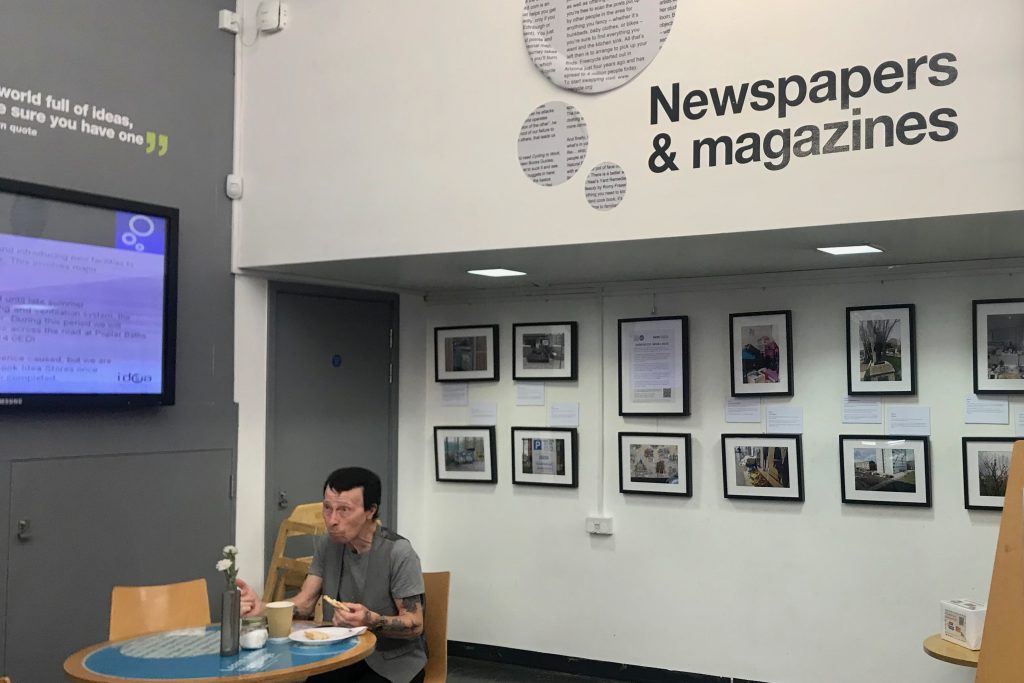
I was interested to see how the outcomes of a photovoice style community research project could be presented as a public exhibition. This work was part of a research project on the relationship between housing and health in Tower Hamlets. It is stated that:
‘The eight exhibitors have used photography to capture their experiences, thoughts and feelings on the topic of housing in their community and in their own home. Issues explored included whether residents have experienced any changes since the introduction of the cuts to public spending particularly affecting the budgets of local government.’ [online]
As, I think, with all photovoice type work (where making and discussing images is at the core of exploration of participants’ lifeworlds), there is a tension between the role of images in the process and the use of images as (exhibitible) outcomes. Fitzgibbon and Stengel (2018) note that the nature of images produced by participants (which can relate to sensitive aspects of their everyday lives) combined with the interdiction placed on images of people where anonymity has been promised, limits which images can be used in accounts of the outcomes of photovoice studies. In their own work, these images may, for instance, represent or infer illegal activities, or situations that might threaten the safety of participants. The images used in the account of their research are consequently apparently mundane and difficult to interpret (the significance of the image lies in the account of the participant). The weight of communicating outcomes rests, as a consequence, on the text, with images playing a very minor part.
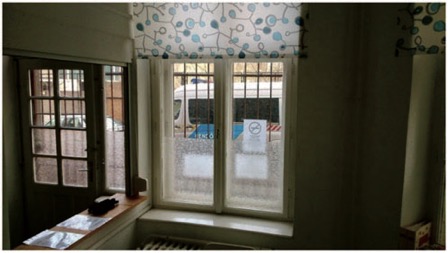
The images in this exhibition are similarly mundane, and reliant upon the text to make the message of each image explicit. There is little in the way of surprise (the concerns of the residents are much as would be expected) or challenge in either the text or the images (though it would have been interested to see a selection of images without the accompanying text). This particular exhibition thus raises question about both the photovoice process as an effective approach to insightful, coherent and convincing research, and as a means of producing powerful images. The exhibition on its own falls short of achieving the aim ‘to stimulate dialogue between residents, policy makers and practitioners’. As Liebenberg (2018) argues, photovoice can be a powerful approach to research and social change, but to achieve this it needs to be conceived, and operationalised, as a form of participatory action research.
References
Fitzgibbon, W. and Stengel, C. M. 2018. ‘Women’s voices made visible: Photovoice in visual criminology’, Punishment and Society, 20(4), pp. 411–431.
Liebenberg, L. 2018. ‘Thinking critically about photovoice: Achieving empowerment and social change’, International Journal of Qualitative Methods, 17(1), pp. 1–9.

